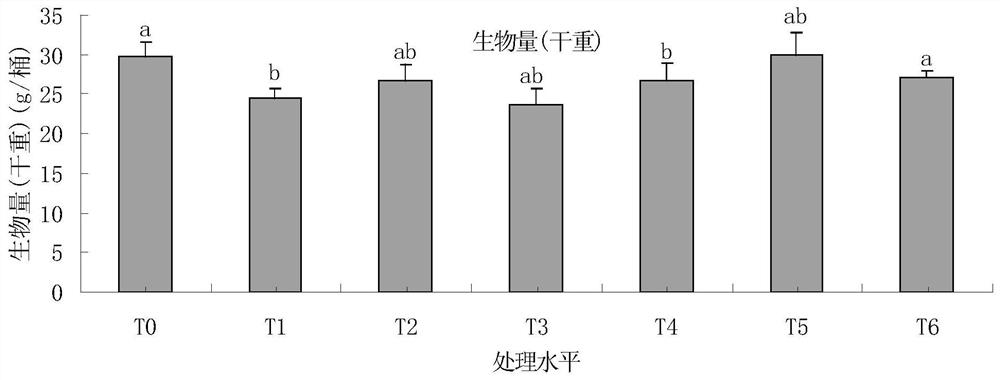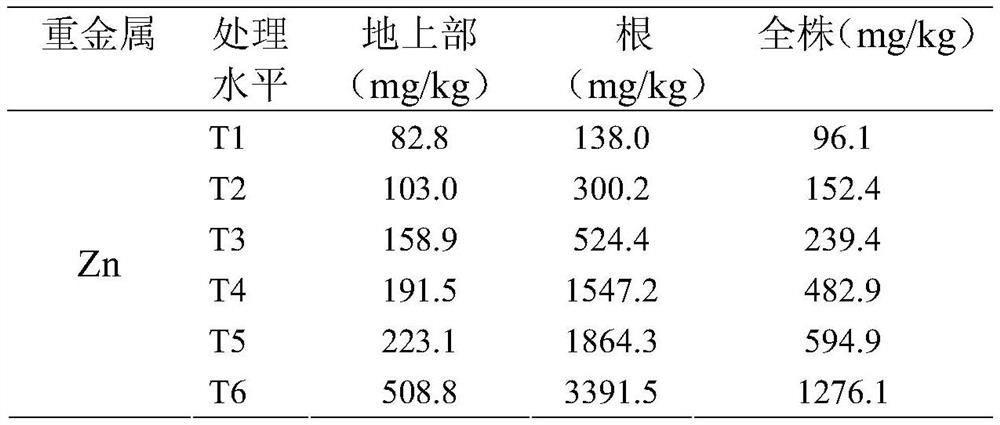A method for remediating zinc-polluted water bodies and wetlands by using Aster diaphylla
An aster and wetland technology, applied in water pollutants, polluted waterways/lakes/ponds/river treatment, chemical instruments and methods, etc., can solve the problems of zinc-contaminated water bodies and wetlands that have not yet been repaired by aster, and achieve The effect of strong resistance, fast growth and easy survival
- Summary
- Abstract
- Description
- Claims
- Application Information
AI Technical Summary
Problems solved by technology
Method used
Image
Examples
Embodiment 1
[0023] The experiment was carried out in the net room greenhouse in the core area of scientific research and experiment of Guangxi Academy of Agricultural Sciences.
[0024] Sow the selected Asteria diaphylla seeds in the sand layer of the plastic seedling raising frame, add ultra-pure water to keep the sand layer moist, and after the seeds germinate, add water containing a small amount of compound fertilizer for their growth and development.
[0025] Choose the same size Asteria asterum seedlings, wash the root with ultrapure water, transplant in fine sand plastic buckets that have been cleaned, the thickness of sand in each bucket is 10cm, and 3 Asteria asteraceae seedlings in each bucket, use nutrient solution (nutrient solution) Its preparation and use methods are consistent with the following references, references: Wang Tianshun, Chen Wei, Yang Yuxia, Liao Jie, Jiang Cuiwen, Jiang Wenyan, Mo Leixing. The effect of silicon on the growth of fruit cane seedlings and zinc a...
Embodiment 2
[0031] In late June 2017, by transplanting, Aster subulatus Michx. was planted in the wetland near the sewage outlet polluted by heavy metal Zn under natural conditions. The transplanted Aster subulatus seedlings were as tall as It is 7-10cm, the distance between plants and rows is 25cm×25cm, and the ternary compound fertilizer is applied for its growth and development; after 85 days, the aboveground part of the plant is harvested, and the stubble is 3-5cm, and the heavy metal Zn content in the aboveground part is measured to be 738.4mg / kg. Centralized ashing treatment is carried out on the harvested asters from wetlands, and then the ashes are safely landfilled or used as raw materials for Zn extraction.
Embodiment 3
[0033] In the first ten days of April 2018, live broadcasting was adopted. Under natural conditions, Aster subulatus Michx. was planted in the wetland near the sewage outlet polluted by heavy metal Zn. Apply decomposed manure for its growth and development; harvest the aboveground part of the plant after 5 months, leave stubble of 3-5 cm, and measure the heavy metal Zn content in the aboveground part to be 842.5 mg / kg. Centralized ashing treatment is carried out on the harvested asters from wetlands, and then the ashes are safely landfilled or used as raw materials for Zn extraction.
PUM
 Login to View More
Login to View More Abstract
Description
Claims
Application Information
 Login to View More
Login to View More - R&D
- Intellectual Property
- Life Sciences
- Materials
- Tech Scout
- Unparalleled Data Quality
- Higher Quality Content
- 60% Fewer Hallucinations
Browse by: Latest US Patents, China's latest patents, Technical Efficacy Thesaurus, Application Domain, Technology Topic, Popular Technical Reports.
© 2025 PatSnap. All rights reserved.Legal|Privacy policy|Modern Slavery Act Transparency Statement|Sitemap|About US| Contact US: help@patsnap.com


